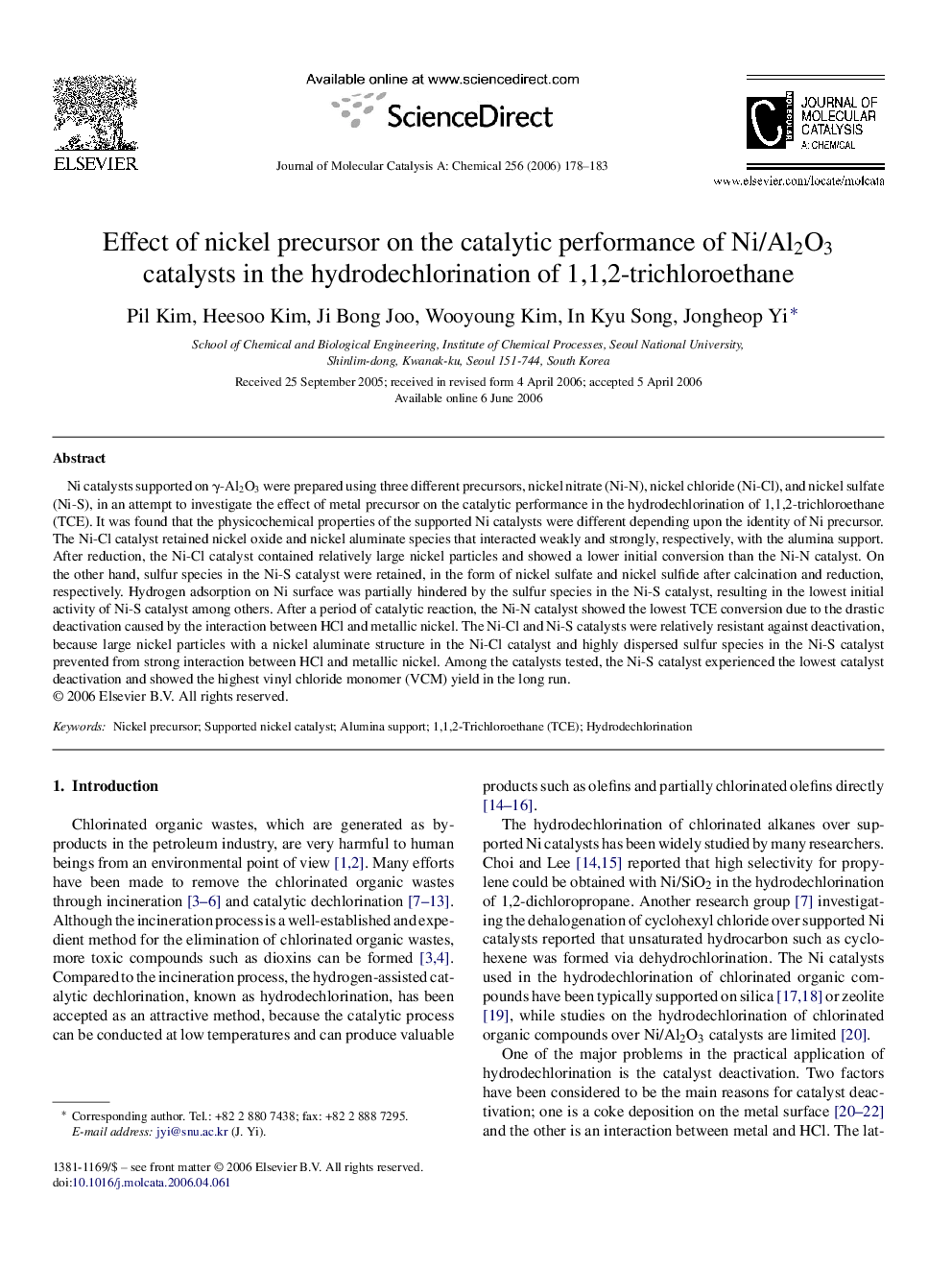| Article ID | Journal | Published Year | Pages | File Type |
|---|---|---|---|---|
| 68608 | Journal of Molecular Catalysis A: Chemical | 2006 | 6 Pages |
Ni catalysts supported on γ-Al2O3 were prepared using three different precursors, nickel nitrate (Ni-N), nickel chloride (Ni-Cl), and nickel sulfate (Ni-S), in an attempt to investigate the effect of metal precursor on the catalytic performance in the hydrodechlorination of 1,1,2-trichloroethane (TCE). It was found that the physicochemical properties of the supported Ni catalysts were different depending upon the identity of Ni precursor. The Ni-Cl catalyst retained nickel oxide and nickel aluminate species that interacted weakly and strongly, respectively, with the alumina support. After reduction, the Ni-Cl catalyst contained relatively large nickel particles and showed a lower initial conversion than the Ni-N catalyst. On the other hand, sulfur species in the Ni-S catalyst were retained, in the form of nickel sulfate and nickel sulfide after calcination and reduction, respectively. Hydrogen adsorption on Ni surface was partially hindered by the sulfur species in the Ni-S catalyst, resulting in the lowest initial activity of Ni-S catalyst among others. After a period of catalytic reaction, the Ni-N catalyst showed the lowest TCE conversion due to the drastic deactivation caused by the interaction between HCl and metallic nickel. The Ni-Cl and Ni-S catalysts were relatively resistant against deactivation, because large nickel particles with a nickel aluminate structure in the Ni-Cl catalyst and highly dispersed sulfur species in the Ni-S catalyst prevented from strong interaction between HCl and metallic nickel. Among the catalysts tested, the Ni-S catalyst experienced the lowest catalyst deactivation and showed the highest vinyl chloride monomer (VCM) yield in the long run.
Graphical abstractNi/γ-Al2O3 catalysts were prepared using three types of precursor, nickel nitrate (Ni-N), nickel chloride (Ni-Cl), and nickel sulfate (Ni-S), to elucidate the effect of metal precursor on the catalytic performance in the hydrodechlorination of 1,1,2-trichloroethane (TCE). Among the catalysts tested, the Ni-S catalyst experienced the lowest catalyst deactivation. Figure optionsDownload full-size imageDownload as PowerPoint slide
